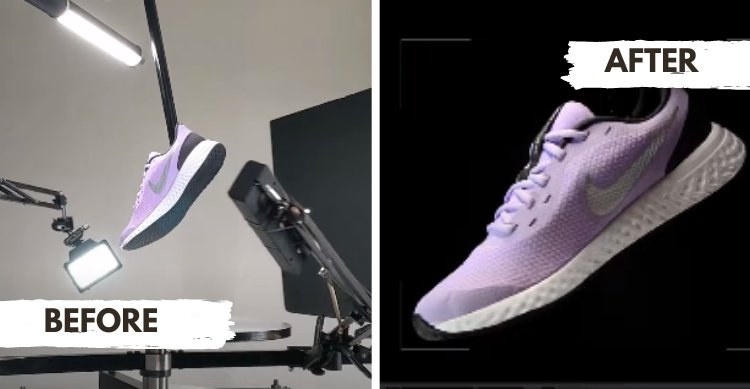It is a game-changer idea in the online marketplace to edit your e-commerce product photos. Which is not just about snapping a picture; it’s about crafting an image that sells.
While your product is showcased at its most impressive, grabbing attention and driving sales. That’s where professional photography services come into play.
They know the tricks of the trade, from removing backgrounds for a sleek look to using shadows to add depth. In that case, if you are considering how do I edit my e-commerce product photos?
It’s simple, by combining the right tools and techniques, such as setting the image profile to sRGB for vibrant colors and batch processing for consistency, you can easily edit your e-commerce product photos.
Stick around, and we’ll dive deeper into each step, ensuring your products look irresistible online.
Why Do E-commerce Photos Need Editing?
E-commerce photos need editing because first impressions matter in the online world. When customers browse through products, they can’t touch or feel them. They rely on visuals. That’s where E-commerce photo editing service comes into play.

These services help enhance images, making products look more appealing. They adjust lighting, remove distractions, and ensure colors are true to life. This not only attracts customers but also builds trust.
After all, no one wants to order a blue sweater only to receive a green one! Editing also creates a uniform look across all product images, giving your website a professional and cohesive appearance.
In short, editing is crucial for making your products stand out and encouraging customers to hit that “buy” button.
Sets of Editing Software You Can Opt For E-commerce Product Photos
The world of editing software piloting can be overwhelming, but fear not! Let’s break it down into a few types that you can consider for your e-commerce photography needs:
- Photoshop: The king of image editing software, Photoshop offers a wide range of tools for detailed photo manipulation, from retouching to compositing.
- Lightroom: If you’re dealing with a large volume of photos, Lightroom is your best friend. It’s fantastic for batch editing, color correction, and organizing your images.
- GIMP: Looking for a free alternative? GIMP is an open-source program that provides many of Photoshop’s features, perfect for those on a budget.
- Canva: Not just for social media graphics, Canva is user-friendly and great for basic editing and adding text or elements to your photos.
- Capture One: Preferred by many professional photographers, Capture One offers powerful color grading tools and tethered shooting capabilities.
Each of these options has its strengths, so consider your specific needs and budget when choosing. Whether you need detailed retouching or just some quick color adjustments, there’s software out there that’s perfect for you.
How Do I Edit My E-commerce Product Photos?
A photo edit for your e-commerce products is like giving them a makeover for their online debut. It’s all about presenting your products in the most favorable light, literally and figuratively. The question is, how do I edit my product photos for e-commerce?

It starts with choosing the right tools and techniques to make your images pop and entice potential buyers. From removing backgrounds for a professional look to ensuring color accuracy, there are several key steps to consider.
Let’s dive into some of these essential editing tips to help your products shine.
Step 1: Remove Background for a Professional Look
Creating a clean, distraction-free background is crucial for a professional appearance. Use photo editing software to remove any clutter or unnecessary elements from the background.
This helps to focus attention on the product and makes it stand out. A plain white background is often preferred for its simplicity and ability to make the product colors pop.
Step 2: Use Popular Product Photo Editors
Invest in popular photo editors like Photoshop or Lightroom. These tools offer a wide range of features specifically designed for product photo editing. They can help you adjust lighting, correct colors, and even add special effects to enhance the visual appeal of your photos.
Step 3: Set Image Profile to sRGB to Preserve Colors
Ensure your photos are set to the sRGB color profile. This is the standard color space for displaying images on the web and ensures that the colors in your photos look consistent across different devices and platforms.
Step 4: Use Shadows to Add Depth
Adding shadows can give your product photos a sense of depth and realism. This can be especially important for products that might otherwise look flat in a photo. Use editing software to create subtle shadows that mimic natural lighting, giving your images a more three-dimensional look.
Step 5: Perform Color Correction for Accurate Colors
Color correction is essential for ensuring that the colors in your photos match the actual colors of your products. Use editing tools to adjust the color balance, saturation, and brightness.
This helps to ensure that your customers know exactly what they’re buying and reduces the chances of returns due to color discrepancies.
Step 6: Crop Photos for Consistency
Cropping your photos to a consistent size and aspect ratio helps to create a uniform look across your e-commerce site. It makes your product listings more visually appealing and easier to find what you want. Use cropping tools to remove any excess space and focus attention on the product.
Step 7: Batch Process Photos for Visual Uniformity
If you have many photos to edit, consider using batch processing. This allows you to apply the same edits to multiple photos at once, saving time and ensuring visual consistency across all your product images. Most professional photo editing software offers batch processing features.
Step 8: Outsource E-commerce Image Editing to Save Time
If editing photos isn’t your forte, or you simply don’t have the time, consider outsourcing your e-commerce image editing to professionals. They can handle all the technical aspects of photo editing, allowing you to focus on other important aspects of your business. This can be a cost-effective solution for ensuring high-quality product photos.
When It is Needed to Edit Photos Professionally?
It isn’t just about making them look pretty while editing photos professionally; it’s about ensuring they serve their purpose effectively. Whether it’s for an e-commerce website or a personal portfolio, there are certain situations where professional photo editing becomes a must.

To Enhance Product Appeal
For e-commerce, professionally edited photos can make or break a sale. By enhancing colors, removing distractions, and adding shadows, you can make your products look more appealing. This not only attracts customers but also builds trust in the quality of your offerings.
For Brand Consistency
Maintaining a consistent look across all your photos reinforces your brand identity. Professional editing ensures that all images have the same tone, style, and quality. This consistency helps customers recognize and remember your brand.
To Correct Flaws
Not all photos come out perfect. Professional editing can fix flaws like poor lighting, unwanted shadows, or color imbalances. By correcting these issues, you can present your subject in the best possible light.
For all these reasons, professional photo editing is essential when you need to enhance product appeal, maintain brand consistency, or correct flaws in your images. It’s an investment that pays off in the form of higher engagement and better customer perception.
Where You Can Edit E-commerce Photos Professionally?
When it comes to editing e-commerce photos professionally, there are several avenues you can explore to ensure your products look their best. Let’s take a look at some of the places where you can get this done:

In-House Editing Team
If you have the resources, setting up an in-house editing team can provide you with full control over the editing process. This team can consist of graphic designers and photo editors who specialize in enhancing product images to match your brand’s aesthetic.
Freelance Photo Editors
Hiring freelance photo editors is a flexible option that allows you to scale your editing needs based on demand. Platforms like Upwork or Fiverr offer a wide range of professionals with varying levels of expertise and pricing.
Professional Photo Editing Services
For a more comprehensive solution, consider professional photo editing services like Visual Sparrow. These services specialize in e-commerce photo editing and offer a range of options, from basic touch-ups to advanced enhancements. They can handle large volumes of images and ensure consistency across all your product photos.
FAQs About How Do I Edit My E-commerce Product Photos?
Editing e-commerce product photos is a crucial step in presenting your products in the best possible light. Here are some frequently asked questions and their answers to help you go through the process.
How Much Does E-commerce Photo Editing Cost?
The cost can vary, but it can start from as low as 39¢ per image, depending on the complexity and volume of the editing required.
What Are the Key Steps in Editing E-commerce Photos?
Key steps include background removal, color correction, cropping for consistency, and adding shadows for depth.
How Long Does It Take to Edit E-commerce Photos?
The time required can vary based on the complexity of the edits and the number of images, but professional services often offer quick turnaround times.
How Can I Ensure My Edited Photos Look Consistent Across My E-commerce Site?
Using batch processing and adhering to a predefined set of editing guidelines can help maintain visual uniformity across your site.
What Should I Look for in a Professional E-commerce Photo Editing Service?
Look for services with experience in e-commerce editing, a portfolio of high-quality work, quick turnaround times, and positive customer reviews.
End Thought
It is crucial to edit your e-commerce product photos to attract and retain customers. The question “How do I edit my e-commerce product photos?” often leads to exploring various tools and techniques.
From removing backgrounds for a professional look to using color correction for accurate colors, the editing process involves several steps. To streamline the process, consider batch processing for consistency and outsourcing to save time.
Don’t forget, the goal is to make your products stand out and entice potential buyers. By following these tips and utilizing professional services when needed, you can ensure your product images are top-notch and ready to make an impact in the online marketplace.
